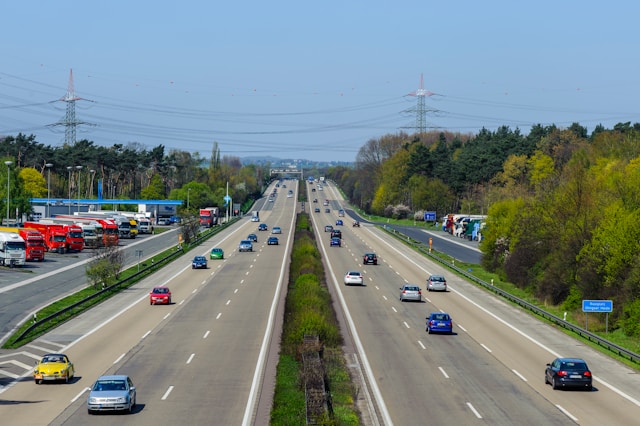
The Autobahn is renowned not only for its expansive network and high-speed limits but also for its exceptional engineering. This article examines the cutting-edge construction techniques and materials that contribute to the durability and safety of the Autobahn, highlighting how these innovations have set standards in highway engineering globally.
Design Principles:
- Safety Focused Design: The layout of the Autobahn is meticulously planned to minimize accidents. This includes features like gentle curves, wide lanes, ample emergency lanes, and highly visible road markings.
- Optimized for Speed: The design accommodates higher speeds with features such as graded curves and extended sight distances, allowing for safer high-speed driving.
Construction Techniques:
- Layered Road Construction: The Autobahn uses a multi-layer construction technique that ensures longevity and resilience. This includes a base layer of heavily compacted crushed stones, followed by several layers of specially designed asphalt that can withstand the pressures of high-speed travel and heavy traffic.
- Bridges and Tunnels: Innovative engineering solutions are employed in constructing durable and safe bridges and tunnels, incorporating the latest in seismic technology and materials science.
Materials Innovation:
- High-Performance Asphalt: The asphalt used on the Autobahn is a high-performance mixture designed to reduce noise, increase durability, and allow for quick water drainage, significantly enhancing safety during wet conditions.
- Sustainable Materials: Efforts to incorporate eco-friendly materials into road construction are prioritized, including recycled asphalt and eco-concrete, which reduce the environmental footprint of highway construction.
Maintenance and Upkeep:
- Regular Maintenance Schedule: The Autobahn is maintained through a systematic schedule that ensures all parts of the network are regularly checked and repaired if necessary. This proactive approach prevents large-scale repairs and maintains overall efficiency.
- Innovations in Maintenance: Robotic repair systems and automated drones are being tested for use in regular maintenance work to reduce human error and increase maintenance efficiency.
Technological Integrations:
- Smart Road Technologies: The integration of smart technologies such as traffic flow sensors and automated weather stations along the Autobahn helps in managing traffic and maintaining safety. These systems provide real-time data used to adjust speed limits and warn drivers of potential hazards.
- Future Innovations: Looking ahead, plans include the use of photovoltaic pavement that can generate electricity and heated road surfaces that can prevent ice formation in winter.
The engineering of the Autobahn goes beyond mere road building; it involves a sophisticated blend of science, technology, and foresight. These innovations not only enhance safety and driving comfort but also set international standards for highway construction. The Autobahn’s engineering achievements continue to influence and inspire road construction projects worldwide.
Related articles:
Why Do Germans Love Their Cars? A Cultural Deep Dive
Safety on the Autobahn
The History of the Autobahn
Eco-Friendly Initiatives on the Autobahn
Touring Germany via the Autobahn
The Future of the Autobahn
The Economic Impact of the Autobahn
Comparing the Autobahn to Other Highways
Speed Limit Debates on the Autobahn







